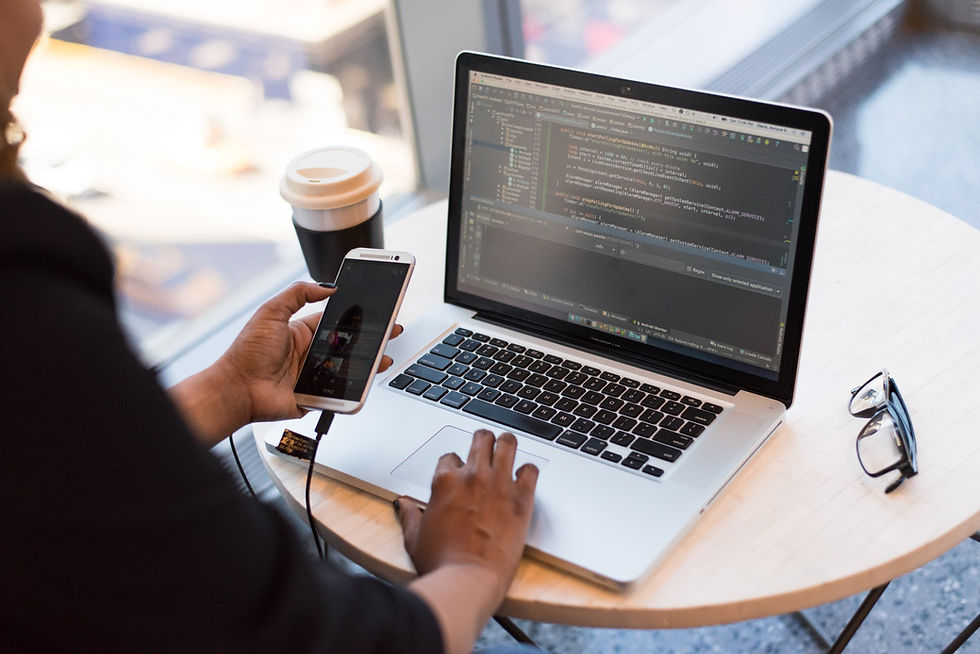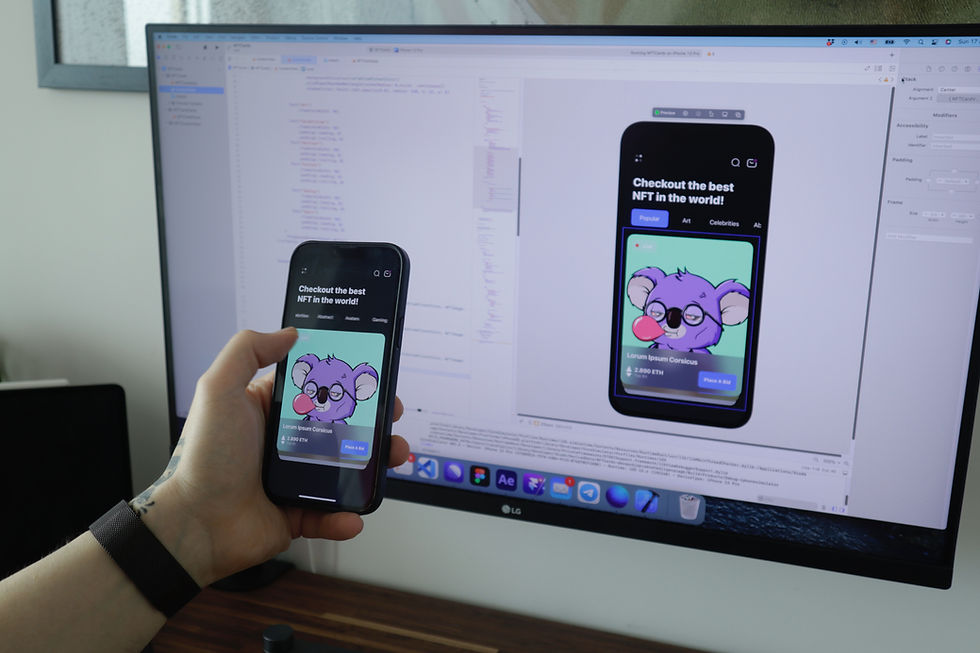Platform calls in Flutter: A Guide to Accessing Native features in Mobile Apps
- Don Peter

- May 5, 2023
- 4 min read

Flutter is a powerful and versatile platform for building mobile applications that can run seamlessly on both iOS and Android devices. One of the key advantages of using Flutter is the ability to make platform-specific calls, which allows developers to access device-specific functionality and create applications that are truly native in look and feel.
In this blog post, we will explore how to effectively make platform calls in Flutter and take advantage of the full range of native features available on both iOS and Android platforms.
What are platform calls in Flutter?
Platform calls in Flutter refer to the ability to access platform-specific APIs and functionality from within your Flutter code. This means that you can write a single codebase in Flutter, but still be able to access native features on both iOS and Android platforms.
Platform calls can be used to access a wide range of device-specific functionality, such as camera and microphone, Bluetooth connectivity, geolocation, and much more. By making platform calls in Flutter, you can ensure that your application is as native as possible, which can lead to better performance and a more intuitive user experience.
How to make platform calls in Flutter?
Making platform calls in Flutter is relatively straightforward. Here are the basic steps:
Step 1:
First, you need to create a new Flutter plugin. A plugin is essentially a package that contains platform-specific code and exposes it to your Flutter application. You can create a plugin using the Flutter CLI command flutter create plugin <plugin-name>. This will create a new directory with the plugin code.
In Terminal:
flutter create plugin my_plugin
cd my_plugin
Step 2:
Next, you need to add the necessary platform-specific code to your plugin. This will vary depending on the platform and the functionality you are trying to access. For example, if you want to access the camera on both iOS and Android, you will need to write platform-specific code to access the camera APIs on each platform.
Sample Kotlin code for Android Platform:
package com.example.my_plugin
import android.content.Context
.....
class MyPlugin: FlutterPlugin, MethodChannel.MethodCallHandler {
private lateinit var channel: MethodChannel
override fun onAttachedToEngine(@NonNull flutterPluginBinding: FlutterPluginBinding) {
channel = MethodChannel(flutterPluginBinding.binaryMessenger, "my_plugin")
channel.setMethodCallHandler(this)
}
override fun onDetachedFromEngine(@NonNull binding: FlutterPluginBinding) {
channel.setMethodCallHandler(null)
}
override fun onMethodCall(@NonNull call: MethodCall, @NonNull result: MethodChannel.Result) {
if (call.method == "myPlatformMethod") {
// Add your platform-specific implementation here
val platformResult = "Hello from Android!"
result.success(platformResult)
} else {
result.notImplemented()
}
}
}
In case of Android, we're implementing the MyPlugin class that extends FlutterPlugin and MethodChannel.MethodCallHandler. We then override the required methods onAttachedToEngine and onDetachedFromEngine to register and unregister the plugin with the Flutter engine, and the onMethodCall method to handle incoming method calls from the Dart code.
In the onMethodCall method, we check for the method name "myPlatformMethod" and execute the platform-specific code as required. In this example, we're simply returning a string message "Hello from Android!".
Sample Swift code for iOS platform:
import Flutter
import UIKit
public class MyPlugin: NSObject, FlutterPlugin {
public static func register(with registrar: FlutterPluginRegistrar) {
let channel = FlutterMethodChannel(name: "my_plugin", binaryMessenger: registrar.messenger())
let instance = MyPlugin()
registrar.addMethodCallDelegate(instance, channel: channel)
}
public func handle(_ call: FlutterMethodCall, result: @escaping FlutterResult) {
if call.method == "myPlatformMethod" {
// Add your platform-specific implementation here
let platformResult = "Hello from iOS!"
result(platformResult)
} else {
result(FlutterMethodNotImplemented)
}
}
}In case of iOS, we're implementing the MyPlugin class that extends FlutterPlugin. We then register the plugin with the Flutter engine using the FlutterMethodChannel and FlutterPluginRegistrar, and override the required method handle to handle incoming method calls from the Dart code.
In the handle method, we check for the method name "myPlatformMethod" and execute the platform-specific code as required. Just like in previous Kotlin code, here we're simply returning a string message "Hello from iOS!".
Step 3:
Once you have added the necessary platform-specific code to your plugin, you need to expose it to your Flutter application. To do this, you will need to create a Dart API for your plugin. This API will act as a bridge between your Flutter code and the platform-specific code in your plugin.
import 'dart:async';
import 'package:flutter/services.dart';
class MyPlugin {
static const MethodChannel _channel =
const MethodChannel('my_plugin');
static Future<String> myPlatformMethod() async {
final String result = await _channel.invokeMethod('myPlatformMethod');
return result;
}
}
In this example, we are creating a class named MyPlugin with a static method myPlatformMethod that will communicate with the platform-specific code. We're using the MethodChannel class from the flutter/services package to create a communication channel between the Flutter code and the platform-specific code.
The invokeMethod method is used to call the platform-specific method with the same name (myPlatformMethod). The platform-specific method will return a String result, which we are returning from the myPlatformMethod method. This is just a basic example, and the actual implementation will vary depending on the functionality you are trying to access.
Step 4:
Finally, you can use the platform-specific functionality in your Flutter code by calling the methods defined in your plugin's Dart API. This will allow you to access native features and functionality from within your Flutter application.
Best practices for making platform calls in Flutter
While making platform calls in Flutter is relatively straightforward, there are a few best practices you should follow to ensure that your application is as native as possible.
Use platform channels: Platform channels are a powerful tool for communicating between your Flutter code and platform-specific code. By using platform channels, you can ensure that your application is as native as possible, and that you are taking advantage of all the features and functionality available on each platform.
Use asynchronous code: Making platform calls can be a time-consuming process, especially if you are accessing APIs that require network connectivity or other types of external communication. To ensure that your application remains responsive and performs well, you should use asynchronous code wherever possible.
Test on multiple platforms: Finally, it is important to test your application on multiple platforms to ensure that it works as expected. While Flutter provides a powerful set of tools for building cross-platform applications, there are still some differences between the iOS and Android platforms that can affect how your application works. By testing on both platforms, you can ensure that your application is as native as possible on each platform.
Conclusion
Making platform calls in Flutter is a powerful tool for accessing device-specific functionality and creating applications that are truly native in look and feel. By following best practices and testing on multiple platforms, you can ensure that your application is as native as possible and provides the best possible user experience.



Comments